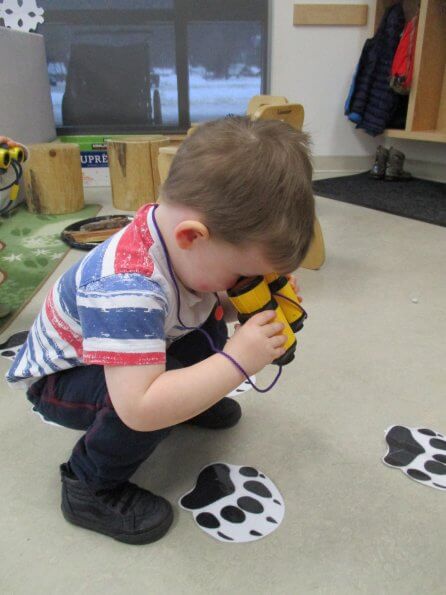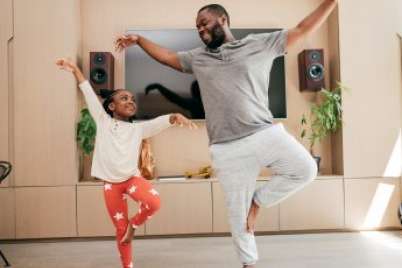
How educators can use the APPLE Model
The first five years are a critically important time in children’s mental, physical, and social development, and the primary way young children learn is through play.
Play allows children to explore, repeat skill-building activities, build confidence, take control, and expand their horizons—and it’s essential for developing physical literacy.
Yet increasingly even very young children are spending much of their play time on screens or in sedentary activities. Researchers have found [PDF] that Canadian toddlers and preschoolers are inactive for as much as 75 per cent of their waking day.
To help educators see how they can incorporate activities that help children develop physical literacy in playrooms, classrooms, and schoolyards, the Early Years Physical Literacy Research Team has developed a visual tool called the APPLE Model: Active Play and Physical Literacy Everyday.
The model can be used along with a companion program called APPLE Seeds, a 12-week program of activities designed to help young children develop physical literacy and fundamental movement skills.
What is physical literacy?
Physical literacy is when children develop the competence, confidence, and motivation to be physically active for life. While “physical literacy” may be a new term for some educators, what it looks like in practice is very familiar to anyone who works with young children.
Physically literate children are motivated to climb higher, jump farther, race faster. They have the confidence to join or initiate a game of tag, climb up on top of the monkey bars, or try sliding down the firefighter’s pole.
Physically literate children also have the competence to know when they’re too high to jump down safely, to avoid tripping on tree roots sticking out of the ground when they’re running through the woods, to help other kids learn the rules of a new game, or to adapt their play to include a younger child or a friend with a disability.
This isn’t something that happens overnight. It begins in infancy, even before babies can walk or talk. That’s why it’s so crucial for early childhood educators to ensure infants and toddlers have lots of opportunities to develop fundamental movement skills through active free play.
Related read: What is physical literacy?
How educators can use the APPLE Model
For Nadine Ducharme, an educator at Corner Stones Child Care in Revelstoke, B.C., the APPLE Model helped her see how small changes to her playroom and the way she interacts with the children in her care could help encourage them to develop the movement skills they needed to become physically literate.
“The concept of physical literacy was difficult for me to understand at first, but once the APPLE Model was introduced it made sense and justified how I want to guide the children in my care,” Ducharme said.
“The APPLE Model has given me the freedom to let the children learn through their play about who they are, what they want, and what they need. It has given me the opportunity to provide a variety of self-directed activities and create enriching environments both indoors and outside that allow the children to develop their skills and abilities.”
Confidence is key
Ducharme said the APPLE Model has changed the way staff see play. When staff started to do less to guide or direct the children’s play, she said the children demonstrated more creativity and imagination. Kids play more freely and with greater excitement, she noted, and are more likely to discover new ways to play with the centre’s materials, activities, and spaces.
“Since introducing the APPLE Seeds program, I have seen a great change in the children, staff, and room,” said Ducharme. “Some one-year-old children are now climbing, moving, and participating in activities that the two- and three-year-old children are doing.”
While Ducharme’s centre had always included time for free play and physical activity, she said the most important takeaway from the APPLE Model for her was the emphasis on building children’s confidence in their own abilities.
Rather than telling children “stop,” “don’t,” “get down,” or “it’s not safe” out of fear that someone might get hurt, educators in her centre are now more open to children playing adventurously. Staff observe children at play carefully, but step in only if there is an unacceptable level of risk
Related read: Be a lifeguard to your child’s “risky” play
How to explain physical literacy to parents
To help parents and staff better understand physical literacy, Ducharme designed a bulletin board to introduce the APPLE Model to staff and parents and illustrate how and why the centre was introducing activities to work on fundamental movement skills including stability, locomotion, and object manipulation.
She produced a giant version of the apple out of Bristol board and stapled it to the parent board. Around the outside she posted photos of the children participating in different activities related to each component of the model, along with point-form explanations of the skills and abilities the children were working on and achieving.
“Looking at the four sections of the ‘APPLE’—environment, play, engagement, and relationships—one at a time allowed for staff and parents to have a greater understanding and acceptance,” she said.
One key takeaway for Ducharme from introducing the APPLE model into her playroom was that children can improve physical literacy through both structured activities and unstructured activities. Children gained stability, locomotor, and manipulative skills through activities, games, and equipment provided by educators, but also simply by climbing play structures or rolling down a hill.
“Applying the APPLE program in our childcare centre has allowed my staff and me to open our minds, expand our horizons, and learn from the children,” she said.
More resources for educators
You can download poster-sized images of the APPLE Model or order postcards from our free downloads page on Active for Life. You may also be interested in the following Active for Life resources:
- Read more about the Early Years Physical Literacy Research Team’s groundbreaking studies about the benefits of physical literacy programming in early childhood education
- Check out our Early Brain Development webinar series
- Get ideas for activities you can do with infants and toddlers
You can find even more for early childhood educators on our ECE page at activeforlife.com/ece.
Photos courtesy of Nadine Ducharme.










This is incredible resources children need to explore things not on gagets on the first place children is not asking so why put something on the big box and let the children discover.